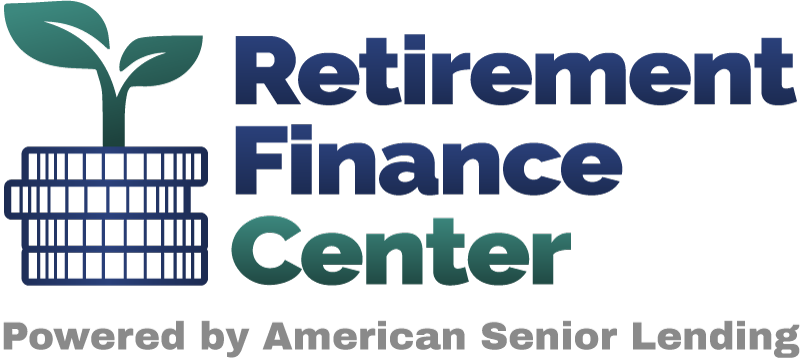A Reverse Mortgage Example
Reverse mortgages are a financial product that is available to homeowners who are 62 years of age or older. These mortgages allow them to access the equity in their homes, without having to immediately sell the property or make any monthly mortgage payments on the borrowed funds (the borrower still needs to pay property taxes and insurance).
This can be a valuable financial tool for older homeowners who need extra cash to cover everyday expenses such as medical bills, home repairs, or living expenses. These mundane expenses tend to add up.
Over the next few minutes we will explain how a reverse mortgage works and provide a scenario to help you understand it better. We hope this helps you and please reach out if you would like to discuss further.
What is a reverse mortgage?
A reverse mortgage is a loan that allows senior homeowners to convert a portion of their home equity into cash. Unlike a traditional mortgage where the borrower makes monthly payments to the lender, a reverse mortgage pays the borrower instead by cashing out some of the borrower’s home equity. The loan is secured by the equity in the borrower’s home, which means that the loan will have to be repaid when the borrower no longer uses the home as the borrower’s primary residence, passes away, or defaults on the loan terms.
How Is the Amount You May Be Eligible to Borrow Determined?
 The funds you may be eligible to borrow, or rather the loan amount, is determined by several factors. Including the age of the borrower, the value of the home, and the current interest rates. The older the borrower, the more equity they can borrow. The loan-to-value (LTV) ratio, which is the percentage of the home’s value that can be borrowed, varies depending on the borrower’s age and the interest rate. The higher the interest rate, the lower the LTV ratio.
The funds you may be eligible to borrow, or rather the loan amount, is determined by several factors. Including the age of the borrower, the value of the home, and the current interest rates. The older the borrower, the more equity they can borrow. The loan-to-value (LTV) ratio, which is the percentage of the home’s value that can be borrowed, varies depending on the borrower’s age and the interest rate. The higher the interest rate, the lower the LTV ratio.
As an example, let’s consider a couple whose home is valued at $455,000 and has an outstanding mortgage balance of $45,000. They are both 70 years old and are considering a reverse mortgage. The current interest rate on a HECM is 4.5%, and the LTV ratio for a borrower aged 70 is 52.4%.
To determine the maximum loan amount, we first calculate the available equity. In this case, the equity is $410,000 ($455,000 home value – $45,000 mortgage balance). Then we multiply the available equity by the LTV ratio to get the maximum loan amount:
$410,000 x 52.4% = $215,240
Therefore, the maximum loan amount this couple can receive through a HECM reverse mortgage is $215,240. They can choose to receive the funds as a lump sum, line of credit, or monthly payments.
It is important to note that the loan amount will also be influenced by the upfront costs associated with the reverse mortgage, which can include origination fees, mortgage insurance premiums, and appraisal fees. These costs will be added to the loan balance, and interest will be charged on the total amount.
What are the requirements for a reverse mortgage?
To be eligible for a reverse mortgage, the borrower must meet several requirements, including:
- Be at least 62 years of age
- The home in question must be their primary residence
- Have sufficient equity in their home
- Meet the financial assessment criteria, which include a review of their credit history, income, and expenses
- Participate in counseling with an approved counselor to ensure they understand the terms and obligations of the loan
What are the potential advantages of a reverse mortgage?
There are several potential advantages to obtaining a reverse mortgage, including:
- Access to cash without having to immediately sell the home or make monthly mortgage payments on the borrowed funds (the borrower must continue to pay property taxes and insurance)
- The ability to use the funds for any purpose
- The borrower retains ownership of the home at closing and can continue to live there as long as they meet the loan obligations
- The loan is non-recourse, which means that the borrower or their heirs will not be responsible for any shortfall if the loan balance exceeds the home’s value when it is sold
- The loan proceeds are not taxable and will not affect Social Security or Medicare benefits**
What are the risks of a reverse mortgage?
While a reverse mortgage can be a valuable financial tool, there are also risks associated with this type of loan. Some of the potential risks include:
- The loan balance can increase over time, reducing the equity in the home and potentially leaving less for the borrower’s heirs
- The upfront costs associated with the loan can be significant and will be added to the loan balance
- The borrower must continue to meet their obligations, such as paying property taxes and homeowner’s insurance, or risk defaulting on the loan
- The borrower’s heirs may have to sell the home to repay the loan if they are unable to refinance or pay off the loan balance in other ways
Hypothetical Reverse Mortgage Scenario

Let’s return to the scenario of the couple whose home is valued at $455,000 and owes $45,000. They are both 70 years old and considering a reverse mortgage to access some of their home equity. After speaking with a HUD-approved counselor and discussing their options with a mortgage loan originator, they decide to apply for a HECM reverse mortgage.
Based on the current interest rate of 4.5% and their age, the maximum loan amount they can receive is $215,240. They decide to receive the loan proceeds as a line of credit, which they can draw from as needed.
After the loan is closed, the couple now has access to additional funds that they can use to cover expenses such as home repairs, medical bills, or everyday living expenses. They continue to live in their home and are responsible for paying property taxes, homeowner’s insurance, and maintaining the property.
Over time, the loan balance will increase as interest accrues and any upfront costs are added to the balance. However, the couple is not required to make any monthly mortgage payments on the loan as long as they continue to meet their obligations.
When the couple eventually moves out of the home, ceases to use it as their primary residence, passes away, or no longer meets their loan obligations (paying property taxes, insurance, and maintaining the home), the loan will have to be repaid in full, including all interest and fees. If the loan balance exceeds the home’s value at that time, the lender will absorb the loss, and the borrower or their heirs will not be responsible for any shortfall.
Next Steps
In conclusion, a reverse mortgage can be a valuable financial tool for seniors who need to access the equity in their home to cover expenses or improve their retirement finances.
By allowing them to tap into their home equity without having to immediately sell or make monthly mortgage payments, reverse mortgages can provide flexibility and security for homeowners.
However, it is important to carefully consider the costs and risks associated with this type of loan, including the potential for the loan balance to increase over time and the impact on the borrower’s heirs. Counseling and education can help borrowers make informed decisions about whether a reverse mortgage is right for them and how to use the loan proceeds effectively.
At this point, a good set of next steps are to complete our free reverse mortgage calculator and receive an estimate of your eligibility and how much you may be able to receive. This is good information to have on hand as you collect and gather information to further educate you on this valuable financial tool.
When ready, reach out to a reverse mortgage lender and discuss your findings from the calculator and request a quote package. This will put you on a path to properly understanding if this is the right path for you.
**Please note that qualification for supplemental benefits may be affected by a reverse mortgage.
